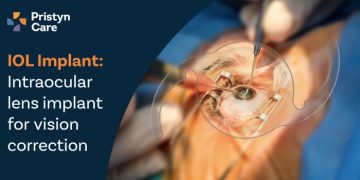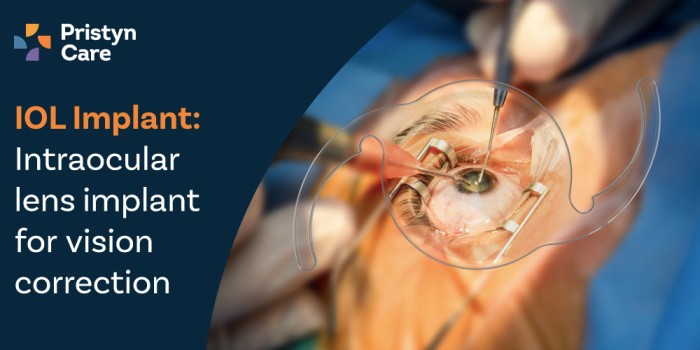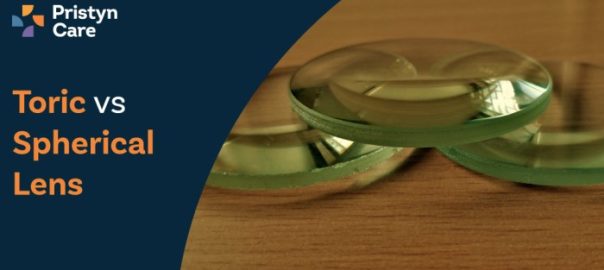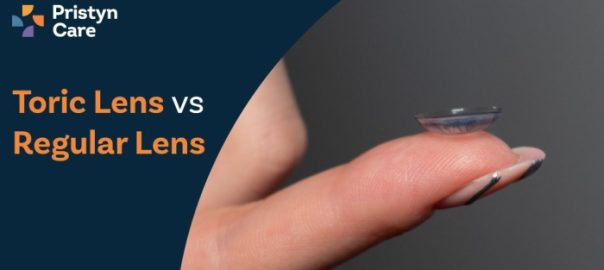![]() Views: 68
Views: 68
IOL Implant: Intraocular Lens Implant for Vision Correction
Dedicated Support at Every Step!
Our Doctors are available 24 hours a day, 7 days a week to help you!
Table of Contents
Understanding Your Eye and Vision
Before deep-diving into the meaning of an IOL implant, it's crucial to understand how your eye works. Think of it as a camera. Like a camera lens, your eye has a natural lens that focuses light onto the retina - the 'film' of this camera. This clear and undistorted light focus gives us a sharp, coloured view of the world around us.
But what happens when vision problems occur? These usually stem from issues with the natural lens of the eye. For instance, with age or due to certain conditions, the lens can become cloudy or distorted, leading to blurred or impaired vision. This is where an IOL implant comes into play.
No Cost EMI, Hassle-free Insurance Approval
Understanding Intraocular Lenses (IOLs)
The term 'IOL implant' refers to an implant of the intraocular lens (IOL). This is a tiny, lightweight, clear disc used in surgeries for cataracts or other vision problems. IOLs serve the same purpose as your natural eye's lens, which is to refract (or bend) light rays that enter your eye, helping you to see. The only difference is that while a natural lens can change shape to focus on objects at varying distances, most IOLs cannot.
During a cataract surgery, the cloudy natural lens of the eye is removed and replaced with an IOL. This surgery is quite safe and typically restores vision to a great extent. There are also different types of IOLs available, each designed to meet individual patient needs.
Types of IOLs
There are three main types of intraocular lenses: monofocal, multifocal, and accommodative lenses.
- Monofocal IOLs: These are the most commonly implanted lenses today. They provide a single focus and usually provide clear distance vision. However, you would still require reading glasses or bifocals after the surgery for close-up tasks.
- Multifocal IOLs: These lenses offer both distance and near focus at the same time. Like bifocal glasses, they can help you see objects both up close and far away. They have several ring-shaped zones, each with a different power.
- Accommodative IOLs: These lenses can shift from focusing on far away objects to focusing on nearby objects in response to movements of your eye muscles; mimicking the natural focusing ability of younger eyes.
The choice of an IOL depends on various factors including your lifestyle and specific visual needs. Your doctor will guide you through the process of choosing the most suitable type for you.
An understanding of Intraocular Lenses (IOLs) and the types available can help you make informed decisions about your eye health, and ensure that you're well-prepared when discussing options with your doctor.
MS, DNB, FICO, MRCS, Fellow Paediatric Opth and StrabismusMobile
FREEConsultation Fee
The Process of IOL Implantation
The Intraocular Lens (IOL) implantation is a common procedure often performed during cataract surgery. Here is a simplified step-by-step guide to help you understand the process:
- Anaesthesia: The very first step in an IOL implant is the administration of local anaesthesia to numb your eye. This helps to ensure your comfort throughout the procedure.
- Incision: Once your eye is numb, the doctor makes a tiny incision in the cornea, the clear surface of your eye.
- Cataract Removal: Using an ultrasonic device, the cloudy cataract lens is gently broken up and suctioned out.
- IOL Placement: The IOL is then carefully inserted through the same incision into the empty lens capsule where the natural lens used to be.
- Completion: The incision is usually self-sealing and stitches are typically not required. The entire procedure generally lasts about 20 minutes.
Preparing for IOL Implantation
Before you go in for an IOL implant, there are a few important health checks and procedures you should know:
- Consultation: Your doctor will have a detailed discussion with you regarding your medical history and any current medications you are taking.
- Eye Examination: An eye exam will be performed to measure the curvature of your cornea and the size and position of your eye's anterior chamber.
- Decision on Lens: Based on these measurements, your doctor will help you choose the best type of IOL for you- be it monofocal or multifocal, depending on your lifestyle needs and vision goals.
- Pre-operative Instructions: You might be asked to fast for several hours before your surgery and also stop certain medication if needed.
Getting ready for the operation is half the battle won, but equally important is what happens post-surgery.
Post-operative Care and Recovery
After IOL implantation, here are some key points you should be aware of to ensure a smooth recovery:
- Eye Protection: Immediately after the operation, you'll have an eye shield over your operated eye to protect it from inadvertent rubbing or accidental touch.
- Medicated Eye Drops: You'll be prescribed antibiotic and anti-inflammatory eye drops. Be sure to use them as directed by your doctor to prevent infection and reduce inflammation.
- Follow-up Visits: Regular check-ups are important to monitor your healing process.
- Activity Restrictions: For a few weeks post-operation, avoid any strenuous activities or anything that might expose your eyes to dust and grime.
- Vision Improvement: Most people notice an immediate improvement in their vision, but complete healing may take several weeks.
Remember, every individual heals differently. So, take the time you need and follow the doctor's instructions for a successful recovery.
Benefits and Risks of IOL Implants
When it comes to improving your vision, an intraocular lens (IOL) implant can be a potential solution. It's a form of vision correction that is often used after cataract surgery. Here, we'll discuss the benefits and risks associated with IOL implants.
The benefits of IOL implants are numerous. For example:
- It can significantly improve vision, especially for those who have had cataract surgery.
- Unlike contact lenses or glasses, you won't need to constantly adjust IOLs as they are permanently placed in your eye.
- They are a one-time solution to correct your vision.
However, just like any other medical procedure, there are risks associated with IOL implants:
- Possible infection or bleeding in the eye after the operation
- The lens may move from its original place or may not perform as intended
- Some people may experience blurred vision, glare or halos
It's important to understand these potential risks before deciding on this procedure. Consulting your doctor about your specific situation is essential.
Conclusion
In conclusion, an IOL implant can be a significant solution for vision correction, particularly following cataract surgery. However, as with any medical intervention, it comes with potential risks. The decision to get an IOL implant should never be made lightly.
Remember that making an informed decision about any surgical procedure, including IOL cataract surgery, is crucial. Always consult with your family physician or specialist before making any decisions about your health.
Ultimately, whether you opt for an IOL implant or explore other options lies in your hands. After all, every choice regarding our health and well-being is a critical one. So arm yourself with all the necessary knowledge and make the decision that suits you best.
With this blog post, we hope we've made understanding the benefits and risks of getting an IOL implant a little simpler. We hope this enlightens you as you consider the various options available for vision correction. And remember, your doctor is your best resource when it comes to your health.
FAQs
- How does IOL cataract surgery work?
IOL cataract surgery works by removing the clouded lens (cataract) from your eye and replacing it with an artificial intraocular lens (IOL). This operation is usually performed under local anaesthesia and can greatly improve vision. - Are there different types of IOL implants?
Yes, there are several types of IOL implants available today. Some are designed to provide only distance vision, while others provide both distance and near vision. Your doctor can help you decide which type of IOL implant is best for your specific needs. - Can an IOL implant be replaced?
Yes, an IOL implant can be replaced if there are complications or if the patient's visual requirements change. This procedure, known as IOL exchange, should always be performed by a skilled eye surgeon. - What is the recovery process like after IOL cataract surgery?
The recovery process after IOL cataract surgery typically involves rest and regular follow-up appointments with your doctor. There may be some temporary vision blurriness, but most patients notice an improvement in their vision within a few days. - How long does an IOL implant last?
An IOL implant is designed to last a lifetime. However, in rare cases, an IOL may need to be replaced due to complications or changes in the patient's vision. - Does getting an IOL implant hurt?
Most patients report little to no discomfort during or after the procedure. The operation is usually performed under local anaesthesia, and post-operative pain can be managed with over-the-counter painkillers or medication prescribed by your doctor. - What can one expect after an IOL implant surgery?
After surgery, your eye may feel itchy or sore for a few days. You may also experience blurry vision as your eye adjusts to the new lens. Most people notice a significant improvement in their vision within a week or two. - Is getting an IOL implant safe?
Yes, IOL implant surgery is considered safe and is one of the most commonly performed operations in the world. However, as with any surgical procedure, there are potential risks and complications. These should be discussed with your doctor. - Does it affect an individual's lifestyle after getting an IOL implant?
Most people find that their quality of life improves significantly after getting an IOL implant, as they can see clearer and sharper than before. However, it may take some time to adjust to the new visual experience. - Who should consider getting an IOL implant?
Anyone who has a cataract or who has been diagnosed with refractive errors like nearsightedness, farsightedness, or astigmatism can consider getting an IOL im`plant. It is always best to consult with your family doctor or ophthalmologist to determine if this type of procedure is right for you.












